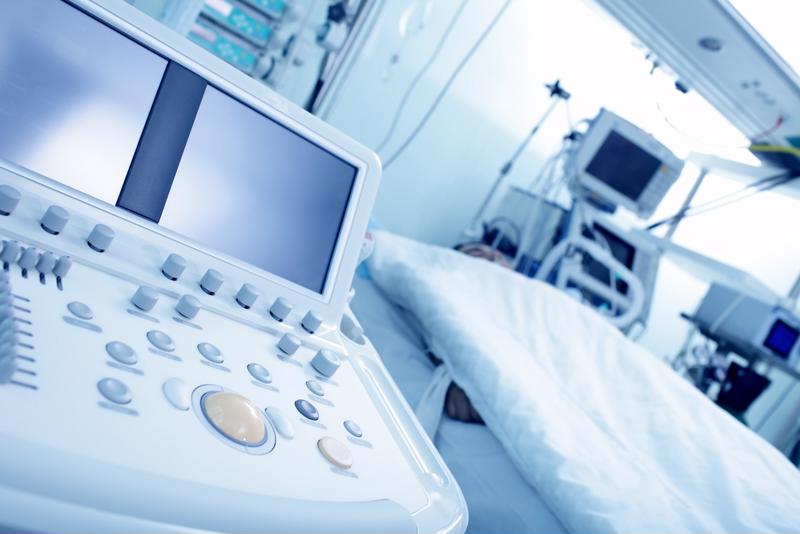
Healthcare IoT market expected to triple in size by 2024
By Max BurkhalterDecember 18, 2019
With the rise of the Internet of Things, industries of all types are reaping the benefits that interconnected technologies bring. From e-commerce logistics to aerospace engineering, IoT technologies enable countless fields to improve efficiency through the internet. Perhaps one of the industries that stands to benefit the most from the IoT is the health care sector. According to research by Markets and Markets, the growth rate of the IoT health care market is expected to triple within five years. Driven by capacity and organizational demands in the Asia Pacific region, as well as innovations from North American and European markets, the health care IoT sector is gradually becoming one of the biggest powerhouses of the information age.
Technologies spurring growth
IoT health care applications stand to grow in value to 188.0 billion USD by 2024, compared to its current value of 55.5 billion USD in 2019. Health care companies have put the IoT to many different uses. With the practice of telemedicine becoming more common, the sharing of relevant information between consumer and professional devices is transforming how medical appointments are conducted. New software enables the linking of medical diagnostic devices to patient databases, and even lets patients share information about their vitals from the comfort of their own homes. And research labs also benefit from the increased level of efficiency that the IoT brings. Experiment results can be collated in record times, and disparate operations can be coordinated with greater ease over the internet. Truly, the IoT allows health care to be conducted in brand new ways that make the overall experience more convenient for patients and doctors.
Emerging IoT technologies in health care will carry the industry to aforementioned exceptional levels of growth. The increasing prevalence of internet-connected devices in health care contexts means that the industry is, in turn, becoming increasingly decentralized. Hospitals across the globe are experimenting with new remote diagnostic devices that patients can operate on their own without going to a clinic. Wearable medical equipment is becoming more mainstream in the health care sector, and implanted devices are not far behind in terms of adoption. These devices are all connected to the IoT, and this technology enables more invasive procedures to become viable. It also lets those who are ill, especially the elderly, to not be overly bound to their local medical facilities, improving quality of life. The medical device field is the segment of the IoT technology market estimated to have the largest market size by 2024. According to Market and Market,"The large-scale adoption of medical devices can be attributed to the growing need for cost-effective and efficient solutions for delivering healthcare services. IoT-enabled medical devices play an important role in data gathering and tracking various activities leading to development of various IoT in healthcare use cases."

Moving forward
With a simple wireless or Ethernet network, IoT technologies connect many different moving parts in medical contexts, where the margin for error can be much lower than other fields. However, this is all just the tip of the iceberg when it comes to the IoT in the health care field. Artificial intelligence research is becoming increasingly focused on potential applications for the technology in medical contexts. Analysis of patient physiological signs can be supervised by an AI, and medical professionals can be notified within microseconds if a patient needs help. During surgeries, diagnostic equipment can coordinate with mechanical equipment with minimal lag time to enable automated surgical devices to conduct operations with ease.
The medical field is seeing efficiency upgrades that could not have been imagined before the rise of the internet; the IoT health care market is seeing strong trends across the globe. Market and Market's research shows that a plurality of IoT health care growth is coming from the Asia Pacific region (APAC). With the large populations of countries in the territory, IoT technologies are in demand due to the need for health care companies to coordinate large amounts of data. Following close behind are North America and Europe; many innovations from established medical and computing technology firms come from this region.
Countless applications within the health care field can be improved through the IoT. Connected imaging, remote patient monitoring, telemedicine, medication management and much more allow both patients and their doctors to plan and coordinate treatments like never before. Perle offers top-of-the-line networking equipment that can help organizations, health care or otherwise, maximize their IoT efficiency gains. Our industrial-grade Ethernet switches and console servers are designed to work within big data environments that rely on the uninterrupted flow of data. Read some of our customer stories to find out more.



